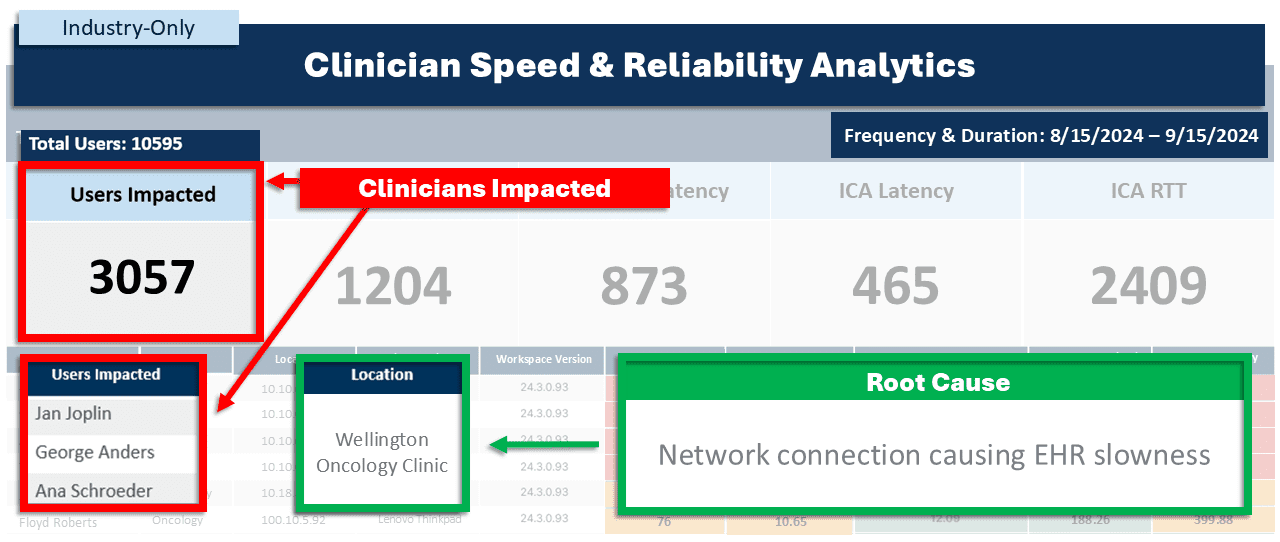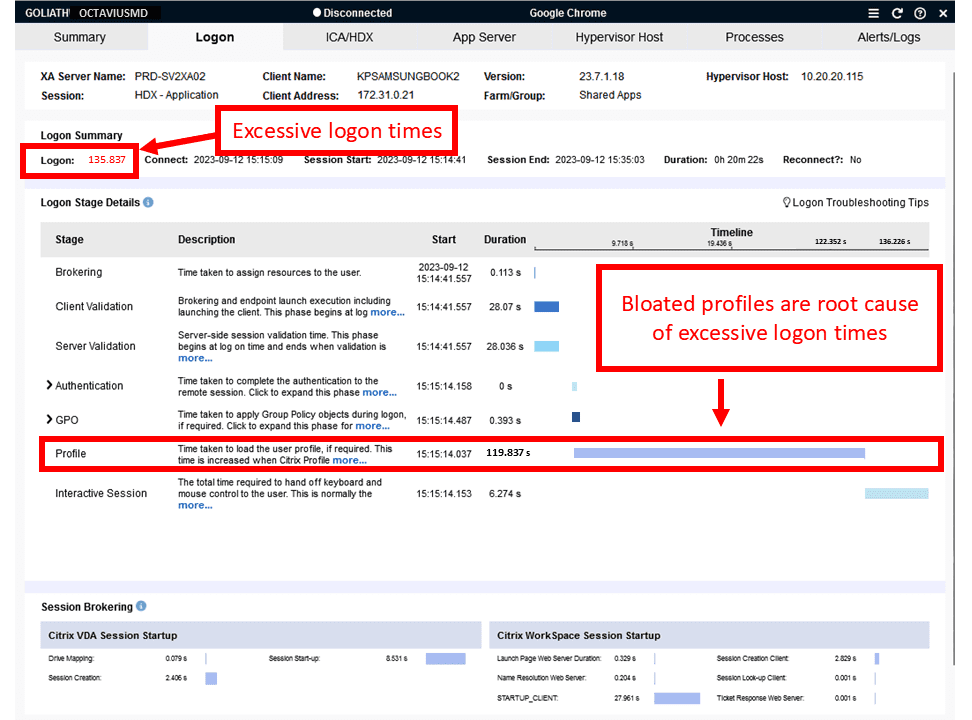50% Reduction in Epic Hyperdrive Logon Times
50% Reduction in Epic Hyperdrive Logon Times
By Thomas Charlton, Goliath Technologies
An acute care health system with 9,500 employees engaged with Goliath and our EHR Speed & Reliability Improvement Program. Their clinicians were outraged by the slow logon times with Epic and other applications. The delay in accessing Epic Hyperdrive was especially frustrating because it often occurred in a patient setting. Our goal was to isolate the root cause quickly so that remediation actions could be implemented, and clinicians could maintain their focus on patients and not technical obstacles.
For those who want to know the result without further reading, the project manager assigned to the initiative sums it up quite well:
“Within the first two weeks we were able to take corrective action to dramatically improve our clinician’s logon experience. I don’t want to say actual numbers because it was so bad, but we reduced the logon times by 50% quickly, and in the next 45 days we dropped to just under 30-second initial logon times and sub-10-second reconnects.”
– Director, System Engineering Team & Clinician Experience Lead
Challenge
The IT Incident Response Team was investigating multiple instances where clinicians were reporting slow logon performance when accessing Epic Hyperdrive. The first challenge was understanding the scope of the problems. As we all know, when relying on users to self-report problems, whether support tickets or surveys, only a small subset will likely respond. Even if you have an overwhelming response the data isn’t actionable to any great degree.
One of the luxuries we have with quantifying digital experience is that it is – digital. So, when we rely on technology enabled empirical data around end user experience, we can get very granular, and understand within hours:
- Who is experiencing speed & reliability issues
- The frequency and duration of those issues
- Probable root cause
This is an example of what the readout would look like:
The results of our initial baseline framed up the problem nicely and informed our troubleshooting focus which would not be in the direction of the Epic Hyperdrive Application because the latency was clearly happening from the end point to the application and not when they were in their Epic session. While not initially apparent based on submitted support tickets or clinician feedback, these issues were both intermittent and chronic spanning 2 larger health systems, 24 clinics and more than 3,000 Epic Hyperdrive users.
Solution
The IT team leveraged Goliath’s AI-enhanced contextual data to help isolate the root cause of the logon issues, giving them the necessary information to permanently resolve the problem. See in the image below, Goliath was able to identify repeated Citrix and Epic Hyperdrive login failures followed by a successful, but relatively slow logon, for these accounts. Goliath also identified this was occurring from multiple devices. Drilling into the failed sessions, it was immediately clear that the “profile load” stage of the Citrix logon was taking too long. Even with successful Citrix logons, the profile load time was extremely high.
This health system uses local profiles on Epic Citrix servers, and this step in the logon process should be completed within 1-2 seconds. Looking at the Active Directory object for that account, they found a defined home folder path that should not be there. The identified path does not exist on the network and as a result, users were forced to wait for Windows to time-out the home drive connect action before eventually being logged into their workstation, or having their Citrix delivered applications connect.
As this path was a legacy carryover from a Google Drive migration, they opened a Priority 2 ticket and then implemented an emergency change to remove the path from the Active Directory object resolving the forced timeouts and long logon times.
Additionally, this problem had been previously reported by users; however, lacking the necessary data, the team was unable to identify the root cause and put permanent fixes in place.
Resolution and Ongoing Proactive Management
As the project manager mentioned in the quote at the beginning of the post, the client was able to get their logon times down to industry’s best practices standards.
Now with the reported issues permanently resolved, the IT team wanted to ensure that they would not have these issues again and if they did occur, they wanted to be alerted by technology and not end users.
They rely on several features for proactive alerting but one such feature is the application availability feature which will proactively log on to Epic 24/7/365 automatically and alert to any logon difficulty with corresponding data necessary to troubleshoot as is seen in the image below. Here a logon failure occurred, and the alert contained an image sent to the IT administrator with key data to enable remediation actions.
Automated Troubleshooting Without Engaging the Users
If you are having end user experience issues with your clinical or business applications, reach out and let’s discuss. We find and fix very specific issues and in a discovery conversation we will let you know if we can assist. If the issues you are experiencing are outside our purview, we will share that as well. If you would like to discuss, reach out to techinfo@goliathtechnologies.com
Learn more about our EHR Speed and Reliability Improvement Program



